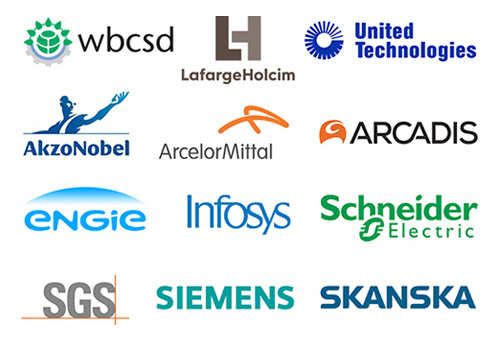Authors
Peter Bakker
By 2050, 70% of the world’s population will live in cities. How can the building and construction sector meet this new demand while accelerating the transition to a sustainable world?
By 2050, 70% of the world’s population will live in cities, meaning that over the next three decades, cities will need to accommodate more than 2.5 billion additional people. How can the building and construction sector meet this new demand while accelerating the transition to a sustainable world?
Buildings have a critical role to play in addressing climate change. They are responsible for one-third of final energy use worldwide, and over 20% of man-made CO2 emissions. By 2050 cities could account for more than 50% of global emissions as rapid urbanization continues.
China’s urbanization has significantly increased energy consumption especially in buildings. The country is projected to see a 160% increase in building energy use by 2050 . This equates nearly to 300 additional coal-fired power stations. Urbanization in China will lead to increasing impacts on air quality and national energy security.
Energy efficiency in buildings must be scaled up as part of the solution to these issues.
Win-win-win for climate, business and society
The International Energy Agency (IEA) estimates that the buildings and construction sector will need to reduce its CO2 emissions by over 80% by 2050 in order to achieve the Paris Agreement. However, given that we need to decarbonize existing buildings and deliver infrastructure to house the world’s growing urban population, this target must be closer to 100%.
This clearly is a challenge, but it is surmountable. To do so, we must learn to construct zero-emission buildings, even at the bottom of the pyramid.
Reducing energy consumption in buildings through increased energy efficiency is already possible and practical. There are existing financially advantageous building practices and technological solutions for building design, construction and operations that ultimately use less energy to heat, cool, ventilate, light and control. Using today’s best practices and technologies, projected energy use in buildings in 2030 can be reduced by 50%.
The recently launched New Climate Economy 2015 report “Better Growth, Better Climate,” illustrates that cities stand to gain from adopting efficient forms of development: greater economic productivity and appeal to investors, improved air quality and public health, reduced poverty and enhanced safety, and substantial avoided infrastructure and public service costs. Low-carbon strategies are thus as much about building healthier, more livable and more productive cities as about reducing GHG emissions.
Energy Efficiency in Buildings

The Energy Efficiency in Buildings (EEB) project, led by the World Business Council for Sustainable Development (WBCSD), is a catalyst driving collaboration throughout the entire sector value chain in order to unleash these potential benefits.
The project recognizes that energy efficiency in buildings is a strong business opportunity. It promotes growth and supports the Global Alliance for Buildings and Construction’s vision to reach a below 2°C path, while delivering economic and social benefits.
EEB 2.0 member companies launched the Low Carbon Technology Partnerships initiative for Energy Efficiency in Buildings (LCTPi-EEB) to scale up local market engagements around the world, led by the private sector.
The EEB project has developed a replicable methodology for public-private sector engagement, each engagement uses a standardized approach to create a local action plan and a coordination platform that is shaped around local priorities.
This approach has market-tested the methodology in ten cities through three-day ‘EEB Laboratory’ engagements that involve all relevant local public and private sector stakeholders to pinpoint issues and priorities and create a coalition to drive transformation. We now aim to scale up the impact of this programme through the framework of the LCTPi.
The goal of an EEB Lab is to build a clear understanding of the market, investigate barriers and enablers for greater local market uptake of EEB solutions, define actions to assist market transformation and recruit key stakeholders to develop and implement an action plan for deployment.
EEB Shanghai: Chinese innovators working to revolutionize the local market
WBCSD chose Shanghai for its EEB laboratory for the size and condition of the real estate market, public interest in improving the country’s energy security, and clear signs of an emerging interest in energy efficiency. Shanghai is also the most populous city in China, with over 23 million inhabitants, providing potential for a significant carbon impact.
With the Green Building Professional Partnership-China (GBPP), China Business Council for Sustainable Development (CBCSD), and support from member companies, the WBCSD held an EEB Laboratory in Shanghai in February 2016.
The Lab developed an Action Plan and EEB Shanghai was formally launched as a platform in June 2016. The group consists of four action committees:
- Awareness and understanding
- Workforce capacity
- Financing
- Policy and regulation
The committees are coordinated by the GBPP, and work towards short and long-term objectives that aim to bring about radical improvements in building energy efficiency in Shanghai in the coming months and years.
Scaling up EEB advancements around the world
The two most advanced engagements in terms of post-EEB laboratory progress are taking place in Houston and Warsaw. As a more mature buildings and construction market, the EEB Lab in Houston devoted significant time to building renovation as well and new-build, with a specific focus on class B and C buildings.
Recent action by EEB Houston has included filming for a new EEB Live program to improve awareness of the multiple benefits of energy efficiency in buildings, and progress towards the creation of a Career Glide-path to enhance the knowledge of EEB among building operators.
EEB Houston also supported the creation of a local Property Assessed Clean Energy (PACE) program that finances energy efficiency improvements and has a US$ 100 million pipeline of projects. while EEB Warsaw is creating Poland’s first Buildings Energy Disclosure Platform.
It is crucial for companies and city leaders participate in EEB laboratories, which clearly highlight how the building sector can support national climate objectives. The goal is to scale up EEB projects to 50 local engagements by 2020, by including more business partners and cities that will lend their urban landscapes to the scrutiny of experts, private and public, to drive transformation from the local level onwards.
Transforming the building market requires action across the entire industry but also from policy makers and end users to overcome key market barriers. National and local authorities must fully understand the value of having energy efficient buildings, now and in the future, to host the world’s growing population. It is also a major investment opportunity for the building value chain.
The Paris Agreement and the adoption of the Sustainable Development Goals (SDGs) have created an irreversible and irresistible pathway to a new low-carbon world. In the lead-up to those agreements we saw Governments and businesses step up. Now it is time to turn that ambition into implementation.
We must make a global effort. The technology and the solutions are available today. To achieve wide-scale implementation, we need policy support from local and national authorities, availability of funding – public and private – and local implementation partners to work together.
Find out more and get involved:
Hunziker@wbcsd.org
This article was originally written for the G20 meeting in Hangzhou, China
WBCSD news articles and insights may be republished in accordance with the Creative Commons Attribution-NonCommercial-NoDerivatives 4.0 International Public License, and in accordance with our Privacy Policy. All Content must be featured with due credits.
Outline

